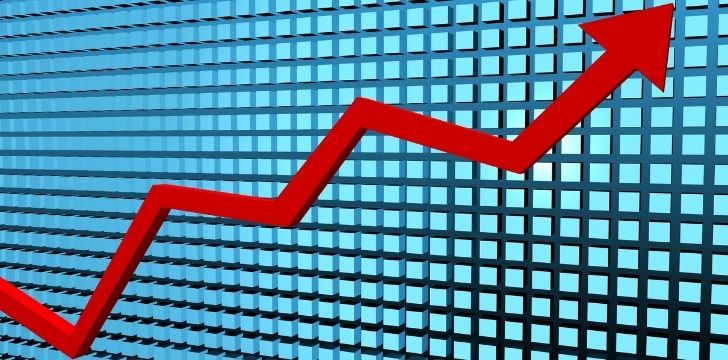Cyber Monday. The beautiful nemesis of Black Friday, the champion of the introvert, the proof that online shopping is better.
No lines! No fighting people for the best deals! No Karens!
It’s safe to say that Cyber Monday, no matter how low in price those Black Friday deals might drop, is by far the superior shopping holiday.
And I’m willing to fight you on that. Virtually.
But, despite the fact that you most likely buy something every Cyber Monday, do you really know much about the holiday itself?
Do you know how high the spending goes up on Cyber Monday? Or how much the average shopper spends? Or how the holiday itself came to be?
Well, you’re about to find out, and maybe – just maybe – it’ll help you on the next Cyber Monday sale!
Cyber Monday was a by-product of terrible early home broadband speeds.

The term “Cyber Monday” was first coined in the early 2000s by Ellen Davis, an e-commerce expert who, amongst other things, analyzed online shopping trends around the holiday season.
It was noted that the Monday after Thanksgiving, millions of American office workers would get online at work and buy everything they’d spent their Thanksgiving weekend gazing at longingly through a storefront window.
But why did they wait until the Monday after Thanksgiving to do it rather than over the weekend at home? Because early home broadband used to suck!
You might think you have it bad now when your internet connection drops from 5g to 4g, but trust me, ya ain’t seen nothin’ ’til you’ve spent five minutes waiting for your two-minute Newgrounds video to buffer.
Seriously – continental plates used to drift faster than home broadband buffered.
As is always the case, though, the speed and quality of the internet in peoples’ offices was far superior to the internet they had at home.
So, because of this, people would do all their online shopping at work, quickly flitting between a quarterly report in Excel and a cart loaded with reduced price goodies!
People still shop at work these days on Cyber Monday.

That’s right, getting your Cyber Monday shopping in at work is still the norm – although most people are no longer doing the shopping on their work computers or the company’s internet.
Polls of the last Cyber Monday revealed that 95% of office workers admitted to doing their shopping on Cyber Monday whilst at work.
The only difference is that now most of them are using their smartphones and devices.
In 2014 alone, a whopping 42% of Cyber Monday sales were done from a smartphone or a tablet.
Although desktop purchases still make up the majority of Cyber Monday sales year after year.
Other polls and analyses of Cyber Monday showed that sales peak at 11:25 am, the time of day when most office workers are on their coffee comedown and the motivation of starting the week enthusiastically is collapsing in on itself like a black hole.
Mondays suck, and buying stuff is scientifically proven to help you feel better on a Monday.
Buying stuff at a crazy discount on a Monday? Well you’d have to be mad not to do it…
But make sure you’re careful, though – since 2011, 22% of employers have had to fire employees for using the internet for non-work related activity!
The amount of revenue Cyber Monday generates just gets bigger and bigger and bigger!

Ever since the term was first properly coined, and the day had its first official outing in 2006, the amount of revenue generated by Cyber Monday has increased every year!
In 2006, the shopping holiday generated sales of $610 million USD.
Impressive in and of itself, but over the years Cyber Monday sales have reached gargantuan sizes, with the holiday raking in a staggering $9.4 billion in 2019!
To put that into perspective, Black Friday sales numbers often dither, rising and falling periodically.
Cyber Monday sales figures only ever rise.
Cyber Monday went global.

In today’s day and age the thought of something going global is usually accompanied by a deep, exacerbated sigh.
But when Cyber Monday started to pick up in the USA, online retailers across the rest of the world started hungrily eyeing up a piece of that sweet, sweet consumer action.
Since the dizzying successes of Cyber Monday have grown, over 16 different countries have gotten in on the action.
Countries, I might add, that do not celebrate Thanksgiving whatsoever.
I’m talking Germany, the UK, France, the Netherlands, Belgium, Japan, Argentina, Canada, India, Chile, Portugal, Romania, Columbia, Sweden, Australia, and New Zealand!
And – just as in the USA – Cyber Monday has only gotten bigger and bigger in each country.
Men are the biggest Cyber Monday shoppers.

In a survey done across the 16 countries that all celebrate Cyber Monday, it was found that men account for 56% of the Cyber Monday shoppers.
The number of Cyber Monday shoppers is rising, but the average order price is falling.

The number of shoppers each year rises and rises – something reflected in the ever-growing sales figures year after year.
However, this growth is due to the higher number of shoppers each year.
Analysis of the data surrounding Cyber Monday has shown that the average spend of a single shopper has been slowly dropping down since it’s $140 peak in 2014.
It is now estimated that the average shopper spends less than $100 on Cyber Monday as of 2019.
Most people buy electronics on Cyber Monday.

When you hear the term Cyber Monday, your mind goes straight to tech due to the online nature of the shopping holiday.
It does, therefore, come as no surprise that technology and electronics are the biggest sellers on Cyber Monday.
However, this is a trend that makes sense because TVs, gaming consoles, tablets, smart speakers, laptops, and white goods are usually the products that have the biggest discounts.
Consumers also turn out for reduced or free shipping costs.

During Cyber Monday a lot of online retailers, especially the big ‘uns, drastically slash or outright get rid of their shipping costs.
This can be quite attractive, especially if you’re ordering something large like a TV, a desktop or white goods.
In a poll done across a large number of Cyber Monday shoppers, 86% said the reduced shipping costs were the second thing about Cyber Monday that lured them in – a close second after the crazy-low price deals.
Cyber Monday is good for the little guy.

Unlike the big chains and franchise stores that can afford sprawling storefronts and reap the rewards on Black Friday, a lot of smaller and independent retailers lose out on the share of profits from Black Friday.
Because of Cyber Monday’s digital nature, those small stores who can’t afford the same quantum of storefront space as the bigger companies are given a more level playing field.
All they have to do to compete with the retail giants is make sure their deals are great, their stockrooms are bursting at the seams, and their website doesn’t crash from excess traffics two minutes after midnight!
Those aged 25 – 34 and 65 years+ do most of the shopping on Cyber Monday.

In a range of polls done across a wide variety of people, it was revealed that both the 25 – 34-year-olds, and the 65 and up age demographics made up for a total of 40% of all Cyber Monday transactions together – with both coming in at 20% each.
This is quite interesting and is easily applicable to the narrative of Cyber Monday we’ve come to expect – office workers on their phones and desktops, and the golden oldies at home on their desktops and devices!
So there you have it, 10 surprising facts about Cyber Monday!
Let us know in the comments down below what your best Cyber Monday deal was, and what you’re looking forward to getting this year!


















